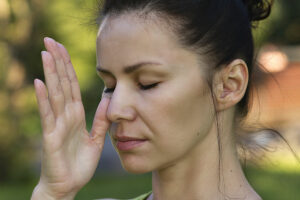12 silent shared symptoms of Parkinson’s and TD

Parkinson’s Disease (PD) and Tardive Dyskinesia (TD) are very different neurological conditions that often share distinctive symptoms. While PD is a progressive neurodegenerative condition primarily characterized by motor impairments, TD can cause problems with motor skills, often affecting arms, legs, face, and neck. However, both conditions may manifest silent symptoms that can easily be missed. Hence, this article explains the conditions and focuses on the overlapping silent symptoms of PD and TD.
But before delving into the shared silent symptoms, one must understand the basics of PD and TD.
Understanding Parkinson’s Disease and Tardive Dyskinesia
Parkinson’s
Parkinson’s is a complex neurodegenerative disorder resulting from losing dopamine-producing cells in the brain. Its hallmark motor symptoms include tremors, bradykinesia (slowness of movement), rigidity, and postural instability. However, the non-motor symptoms often go unnoticed or are mistaken for other health issues.
Tardive Dyskinesia (TD)
TD is a movement disorder that can affect certain body parts and contribute to involuntary, repetitive movements, primarily affecting the face, lips, tongue, and sometimes limbs. While there is not much information on how the symptoms begin, one can consider chronic blockage of dopamine as one of the leading causes.
Now that one has basic information on these disorders, let’s focus on the shared symptoms of PD and TD that one may miss.
Shared silent symptoms of Parkinson’s disease and Tardrive Dyskinesia
Mood changes
Parkinson’s and TD can lead to mood alterations. Patients may experience feelings of irritability. These emotional shifts are often attributed to unrelated stressors, masking the underlying neurological conditions. Recognizing these mood changes as potential early signs is vital for timely intervention.
Cognitive impairment
Cognitive difficulties can be a shared silent symptom. Individuals with Parkinson’s or TD may face memory problems, reduced attention spans, and impaired executive functions. These cognitive impairments are frequently dismissed as regular aging-related changes or stress-induced lapses. But they can indicate something more profound. Thus, when one faces cognitive function-related difficulties, one must seek medical attention promptly.
Sleep disturbances
Sleep issues are common in both conditions. Insomnia, frequent nighttime awakenings, and daytime sleepiness can affect individuals with Parkinson’s and TD. Unfortunately, these disturbances are often attributed to lifestyle factors or undiagnosed sleep disorders, delaying identifying the underlying problem.
Autonomic dysfunction
In Parkinson’s and TD, autonomic dysfunction affects automatic bodily functions, such as blood pressure regulation and digestion. Symptoms like constipation, urinary problems, and changes in blood pressure may not immediately raise suspicion but should prompt further evaluation.
Speech and swallowing difficulties
Both conditions can affect speech and swallowing. Slurred speech, difficulty pronouncing words, and problems with swallowing can develop over time. These issues are sometimes dismissed as unrelated problems or attributed to other causes. Hence, one must consult a certified medical professional to ensure a complete evaluation of the underlying issue.
Pain and sensory changes
Silent symptoms also encompass pain and sensory changes. Individuals with Parkinson’s or TD may report muscle pain, numbness, or tingling sensations. These sensations are frequently misinterpreted as musculoskeletal issues or unrelated neurological problems.
Fatigue and lack of energy
Fatigue and persistent lack of energy are shared silent symptoms. Even after a full night’s rest, patients may complain of unexplained exhaustion. These symptoms can be easily brushed off as typical fatigue, delaying recognizing an underlying issue.
Anosmia (loss of smell)
A diminished sense of smell or anosmia is a shared symptom between Parkinson’s and TD. However, the loss of smell can occur years before motor symptoms in the former. It is often attributed to allergies or sinus issues, leading to a delay in diagnosis.
Drooling
Excessive drooling or sialorrhea can affect individuals with Parkinson’s and TD. This symptom may be dismissed as a minor inconvenience rather than a potential indicator of an underlying neurological condition.
Reduced facial expressions
A “masked face” expression, characterized by reduced facial animation and limited expressiveness, is a shared feature in Parkinson’s and TD. This symptom can be mistaken for an individual’s natural demeanor or an unrelated social behavior.
Freezing of gait (FoG)
Freezing of gait is a phenomenon where individuals suddenly find themselves unable to initiate or continue walking. This can feel like feet being glued to the ground. Usually, it can occur in both but is more commonly associated with Parkinson’s. In TD, it is rare and may result from involuntary movements interfering with normal gait. In either case, FoG is often subtle and intermittent, making it challenging to diagnose without careful observation.
Micrographia
Micrographia refers to the gradual reduction in the size and legibility of a person’s handwriting. It can occur in both conditions due to motor control difficulties. Patients with micrographia may not notice these changes in their handwriting until they become quite pronounced, and even then, they may attribute it to factors other than their underlying neurological condition.
Recognizing the overlapping silent symptoms of Parkinson’s and TD is crucial for early diagnosis and thorough management. These shared symptoms underscore the complexity of diagnosing and managing Parkinson’s and TD, highlighting the need for heightened awareness among healthcare professionals and caregivers to detect these subtle but significant signs.
Further, healthcare professionals and caregivers should maintain a high level of caution when evaluating patients who present these symptoms, particularly if they are associated with risk factors such as being a specific gender, having a family history of the issue, and having negative symptoms of schizophrenia. A thorough diagnosis will enable a healthcare provider to formulate a proper treatment plan for faster recovery.
Early intervention and appropriate management can significantly improve the quality of life of affected individuals. Exercising is one of the key management strategies to improve one’s condition. It may help relieve movement symptoms, including tremors and others related to gait, balance, and flexibility. Although both conditions can tremendously impact one’s life, taking proactive steps can help manage symptoms better.



